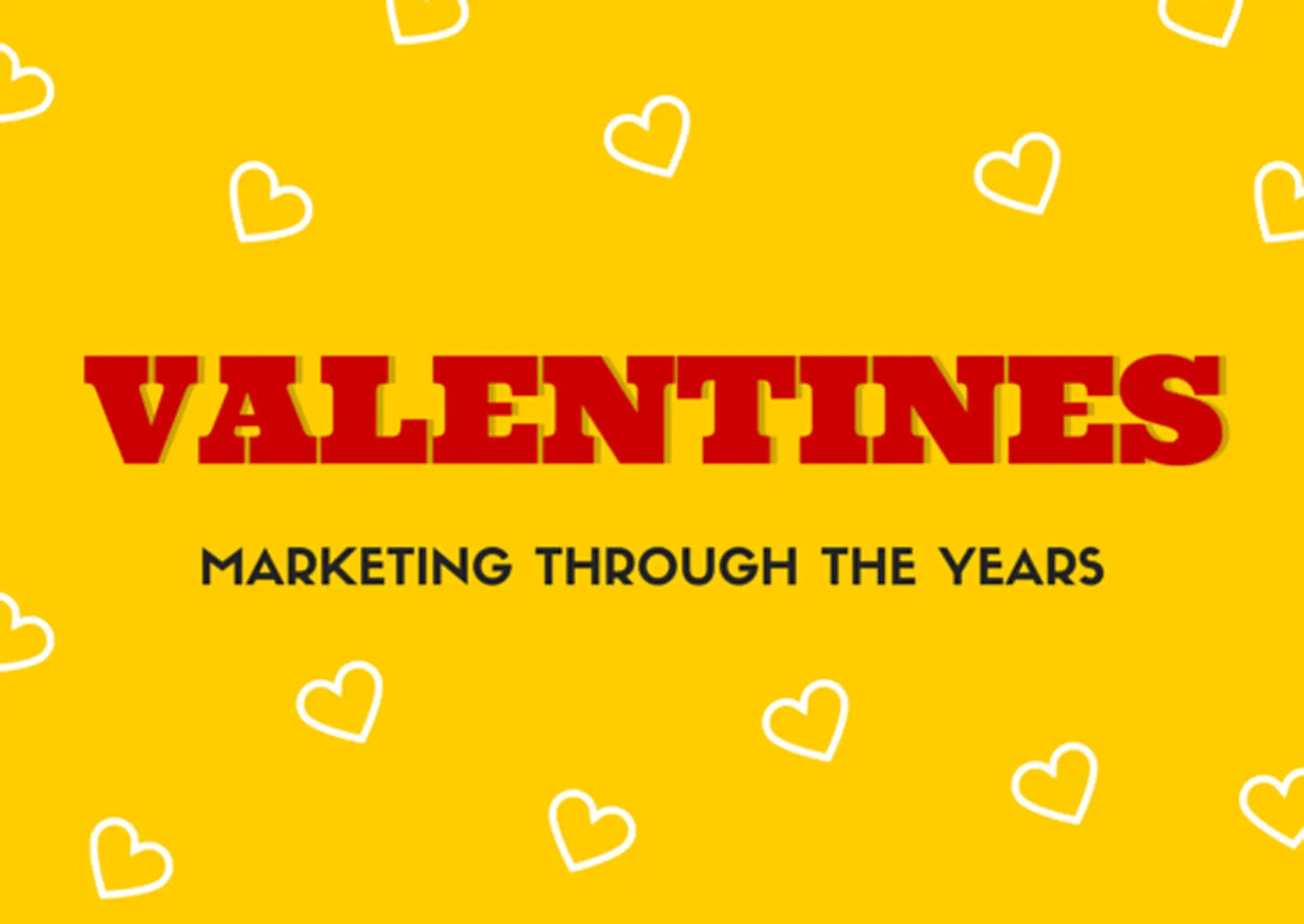 It's easy to dismiss Valentine's Day as just another "Hallmark Holiday", but you won't find any cynicism from those of us here at Palmer. Just in case there was any doubt, we're hopeless romantics. And with Valentine's Day just around the corner, we figured it'd be a great opportunity to revisit a recurring topic: holiday marketing.
It's easy to dismiss Valentine's Day as just another "Hallmark Holiday", but you won't find any cynicism from those of us here at Palmer. Just in case there was any doubt, we're hopeless romantics. And with Valentine's Day just around the corner, we figured it'd be a great opportunity to revisit a recurring topic: holiday marketing.
Therefore, on the heels of our examination of vintage holiday marketing efforts back in December, today, as part of our of Throw Back Thursdays (#TBT), we'd like to look at Hallmark through they years in honor of Valentine's Day. As with our vintage Christmas marketing post, we're less interested in the history of the ads — although we'll touch on some historical tidbits — as much as what the ads tried to convey, and what, many decades later, they can teach us. So, using this helpful Hallmark primer on the history of Valentine's Day as a guide, let's look at various vintage ads for guidance.
Let's start with a fun fact. Hallmark first started creating its own Valentine's Day cards in 1915. A closer look at the cards from this era can't help but fill you with nostalgia. These cards are marked by their simplicity and use of simple poetry, like, "This heart of mine is ever thine," replete with flowers, hearts, and bows. The message for today's marketers? Simplicity is timeless.
Early Hallmark Valentine's Day cards were also subtle, coy, and slightly racy. We came across one from the Roaring 20's in which a very cute Flapper shyly sits on a couch. She's smiling sweetly and next to her is an empty seat. The text below reads, "Parking permitted — evenings by appointment." Meaning, "Hey there, wanna sit down?" Again, the effect, which shouldn't be lost on marketers, is that in today's world of in-your-face ads, people will respond to a subtlety and childlike innocence.
We also stumbled upon a very cute Hallmark valentine that gave us a lump in our throat. We see two young people — they may be as young as 10 years old — with their backs to us. The boy (wearing suspenders, no less) has his arm around the girl, who has her head on his shoulder. They're watching the sun set. Below it reads, "Next to myself I like you best," with two hearts. Once you get past the unintended arrogance of the message — he really likes himself more than her? — you realize why the valentine is so powerful: it conveys an experience. What's more romantic that watching a sunset with the one you (in this case) like? So marketers, take note: don't sell a product. Sell an experience.
While most of these ads thus far have a kind of timeless, albeit nostalgic, quality, other interesting Hallmark valentines successfully reflected the zeitgeist of the times. There's a 1970s valentine showing a bearded hippie guy, wearing love beads, flip flops, and holding a guitar. The guy says, "What this old world needs…" — and then, when you open the card — "is more nice people like you." Does the card look dated now? Yeah, a little. But it effectively captured the whole "Have a Nice Day" flower-power vibe at the time.
So there you have it: some marketing-related food for thought, just in time for Valentine's Day. Now if you'll excuse us, we're going to go watch the "boombox scene" in "Say Anything" on repeat.
What do you think? What can we learn from vintage holiday marketing? What elements are timeless? What makes a good holiday ad?





